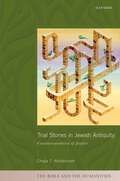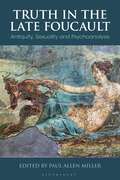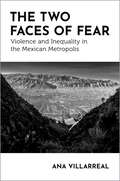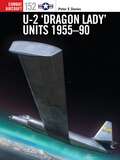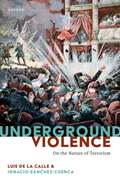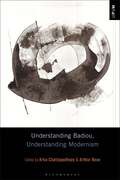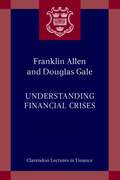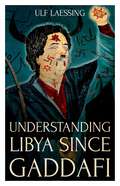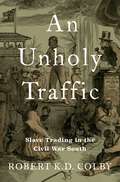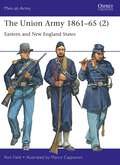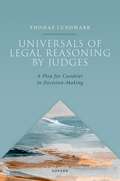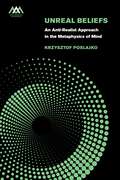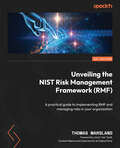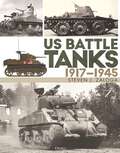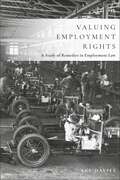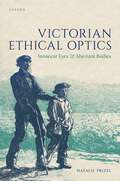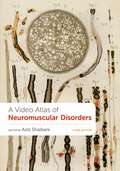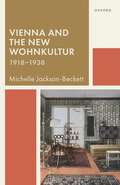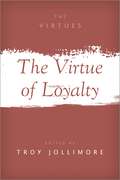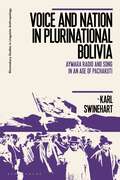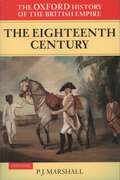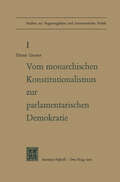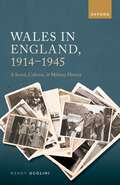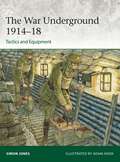- Table View
- List View
Trauma-Informed Art Activities for Early Childhood: Using Process Art to Repair Trauma and Help Children Thrive
by Anna ReynerWhy Art & Trauma? By making their own choices as they engage in sensory art experiences, children gain confidence, release stress, express emotions, and develop critical-thinking skills. Art offers a unique opportunity for children to safely experiment with the physical world and re-wire their brains to reduce the negative effects of trauma, all while learning to identify as creative thinkers. This highly illustrated and easy-to-use resource supports trauma-informed work with children ages 3-8. It delves into both the theory and practice of therapeutic art and includes 21 original art lessons and 60 art techniques, all presented visually for ease of use. Both text and illustrations demonstrate how to create a safe, non-retraumatizing environment for children to experience safety, connection and calm. Ideal for implementing into classroom environments, including preschools, kindergarten, early primary grades, afterschool programs, child counselling centers and community-based youth programs, this professional resource is perfectly adaptable for a variety of educational and therapeutic contexts.
Trial Stories in Jewish Antiquity: Counternarratives of Justice (The Bible and the Humanities)
by Chaya T. HalberstamWhat can early Jewish courtroom narratives tell us about the capacity and limits of human justice? By exploring how judges and the act of judging are depicted in these narratives, Trial Stories in Jewish Antiquity: Counternarratives of Justice challenges the prevailing notion, both then and now, of the ideal impartial judge. As a work of intellectual history, the book also contributes to contemporary debates about the role of legal decision-making in shaping a just society. Chaya T. Halberstam shows that instead of modelling a system in which lofty, inaccessible judges follow objective and rational rules, ancient Jewish trial narratives depict a legal practice dependent upon the individual judge's personal relationships, reactive emotions, and impulse to care. Drawing from affect theory and feminist legal thought, Halberstam offers original readings of some of the most famous trials in ancient Jewish writings alongside minor case stories in Josephus and rabbinic literature. She shows both the consistency of a counter-tradition that sees legal practice as contingent upon relationship and emotion, and the specific ways in which that perspective was manifest in changing times and contexts.
Truth in the Late Foucault: Antiquity, Sexuality, and Psychoanalysis (Bloomsbury Studies in Classical Reception)
The first full treatment of truth as a core philosophical concept in the late Foucault, this volume examines his work on the ancient world and the early church. Each essay features a deep examination as to how the topics of truth and sexuality intersect with and focus on Foucault's engagement with ancient philosophy and thought. Truth in the Late Foucault offers readings on Plato, Artemidorus, Cicero, Sophocles and the Stoics, and pays close attention to Cassian, Paulinus of Nola, and early Christian practices of confession. With the publication of the long-awaited volume 4 of the History of Sexuality: Confessions of the Flesh, the shape of the final Foucault is now brought into stark relief. As well as looking at ancient thought, the contributors explore Foucault's work in relation to philosophers such as Gadamer, Heidegger, Derrida and Descartes. Foucault's long-running and often contentious dialogue with psychoanalysis, on the relation between truth and the subject, is also examined. Each essay not only makes an important statement, but also is part of an interconnected arc of topics and understanding, covering both the ancient and modern periods. This book reveals that Foucault's concern with antiquity raises questions deeply pertinent to the present moment.
The Two Faces of Fear: Violence and Inequality in the Mexican Metropolis (Global and Comparative Ethnography)
by Ana VillarrealOver the past two decades, increased criminal and state violence has profoundly transformed everyday life in Mexico. In The Two Faces of Fear, Ana Villarreal draws on two years of qualitative fieldwork conducted during a major turf war in Monterrey, Mexico to trace the far-reaching impact of fear and violence on social ties, daily practices, and everyday spaces. Villarreal brings two seemingly contradictory faces of fear into focus--its ability to both isolate and concentrate people and resources, deepening inequality. While all residents of one of Mexico's largest metropolises confronted new threats, the most privileged leveraged vastly unequal resources to spatially concentrate and defend one municipality more fiercely than the rest. Within this defended city, business, nightlife, and public space thrived at the expense of the greater metropolis. The book puts forth a new approach to the study of emotion and provides tangible evidence of how quickly fear worsens inequality beyond Mexico and the "war on drugs."
U-2 ‘Dragon Lady’ Units 1955–90 (Combat Aircraft #152)
by Peter E. DaviesAn illustrated account of the early service of the Lockheed U-2, one of the most important and longest-serving intelligence gathering platforms fielded by the US air force.The U-2 is one of the most recognizable aircraft of the Cold War; nicknamed the 'Dragon Lady' after the codename given to it by the CIA, this powered glider was designed and operated in great secrecy, providing US authorities with photographic and electronic information from areas of interest across the globe. This illuminating new volume dives deep into the U-2's most critical missions, exploring its role in the Cuban Missile Crisis, nuclear reconnaissance in the Soviet Union, and intelligence missions in China and North Vietnam.Using previously unpublished research, aviation expert Peter E. Davies examines the operations of one of the landmark aircraft of the 20th century from a fresh and engaging perspective, enhanced by more than 50 photos and 21 newly commissioned profile artworks.
Underground Violence: On the Nature of Terrorism
by Luis de la Calle Ignacio S??nchez-CuencaWhat makes terrorism a unique form of political violence is its underground nature. According to the conceptualization of the phenomenon offered in this book, terrorism is the kind of violence carried out when the perpetrators lack territorial control. There is a strong link between terrorism and secret, clandestine operations, making terrorists attacks ephemeral, as opposed to battles and assaults. The book offers a comprehensive conceptual analysis of terrorism, comparing it with competing theories and views on the subject, such as terrorism is killing civilians, or terrorism is a form of violence that relies on the distinction between direct and indirect targets. The conceptualization advanced here makes sense of some peculiar traits of terrorism, from international attacks (in which the underground constraint is most obvious), to lone-actor ones (in which a single individual commits a deed). It also delimits the possibility of state terrorism as covert operations by security forces, normally abroad. Approaching terrorism in terms of the underground not only makes sense of how we talk about terrorism, but it also generates testable consequences. Through a combination of statistical and comparative analyses, it is shown that the use of terrorism is driven by the degree of asymmetry between the contending parties.
Understanding Badiou, Understanding Modernism (Understanding Philosophy, Understanding Modernism)
In his philosophical project, aesthetic orientation and political leanings, Alain Badiou is a product of, and a leading advocate for, European modernism. From the milieu of May 1968 to the contemporary 'postmodern' ethos, Badiou returns, time and again, to avant-garde modernist texts – aesthetic, political, philosophical and scientific – as inspiration for his response to present situations. Drawing upon disciplines as varied as architecture, cinema, theatre, music, history, mathematics, poetry and philosophy, Understanding Badiou, Understanding Modernism shows how Badiou's contribution to philosophy must be understood within the context of his decades-long conversation with modernist thinking. As with other volumes in the series, Understanding Badiou, Understanding Modernism follows a three part structure. The first section explores Badiou's readings of aesthetic, political and scientific modernities; both introducing his system and pointing to how Badiou offers manifold readings of modernism. The middle portion of the book connects Badiou's thought with the various strands of aesthetic, philosophical, amorous and political modernisms in relation to which it can be extended. The final section is a glossary of key concepts and categories that Badiou uses in his interface with modernism.
Understanding Financial Crises (Clarendon Lectures in Finance)
by Franklin Allen Douglas GaleWhat causes a financial crisis? Can financial crises be anticipated or even avoided? What can be done to lessen their impact? Should governments and international institutions intervene? Or should financial crises be left to run their course? In the aftermath of the Asian financial crisis, many blamed international institutions, corruption, governments, and flawed macro and microeconomic policies not only for causing the crisis but also unnecessarily lengthening and deepening it. Based on ten years of research, the authors develop a theoretical approach to analyzing financial crises. Beginning with a review of the history of financial crises and providing readers with the basic economic tools needed to understand the literature, the authors construct a series of increasingly sophisticated models. Throughout, the authors guide the reader through the existing theoretical and empirical literature while also building on their own theoretical approach. The text presents the modern theory of intermediation, introduces asset markets and the causes of asset price volatility, and discusses the interaction of banks and markets. The book also deals with more specialized topics, including optimal financial regulation, bubbles, and financial contagion.
Understanding Libya Since Gaddafi
by Ulf LaessingWhy has Libya fallen apart since 2011? The world has largely given up trying to understand how the revolution that toppled Muammar Gaddafi has left the country a failed state and a major security headache for Europe. Gaddafi's police state has been replaced by yet another dictatorship, amidst a complex conflict of myriad armed groups, Islamists, tribes, towns and secularists. What happened? One of few foreign journalists to have lived in post-revolution Tripoli, Ulf Laessing has unique insight into the violent nature of post-Gaddafi politics. Confronting threats from media-hostile militias and jihadi kidnappings, in a world where diplomats retreat to their compounds and guns are drawn at government press conferences, Laessing has kept his ear to the ground and won the trust of many key players. Understanding Libya Since Gaddafi is an original blend of personal anecdote and nuanced Libyan history. It offers a much-needed diagnosis of why war has erupted over a desert nation of just 6 million, and of how the country blessed with Africa's greatest energy reserves has been reduced to state collapse.
An Unholy Traffic: Slave Trading in the Civil War South
by Robert K.D. ColbyThe Confederate States of America was born in defense of slavery and, after a four-year struggle to become an independent slaveholding republic, died as emancipation dawned. Between Fort Sumter to Appomattox, Confederates bought and sold thousands African American men, women, and children. These transactions in humanity made the internal slave trade a cornerstone of Confederate society, a bulwark of the Rebel economy, and a central part of the experience of the Civil War for all inhabiting the American South. As An Unholy Traffic shows, slave trading helped Southerners survive and fight the Civil War, as well as to build the future for which they fought. They mitigated the crises the war spawned by buying and selling enslaved people, using this commerce to navigate food shortages, unsettled gender roles, the demands of military service, and other hardships on the homefront. Some Rebels speculated wildly in human property, investing in slaves to ward off inflation and to buy shares in the slaveholding nation they hoped to create. Others traded people to counter the advance of emancipation. Given its centrality to their nationhood, Confederates went to great lengths to prolong the slave trade, which, in turn, supported the Confederacy. For those held in slavery, the surviving slave trade dramatically shaped their pursuit of freedom, inserting a retrograde movement into some people's journeys toward liberty while inspiring others to make the risky decision to escape. Offering an original perspective on the intersections of slavery, capitalism, the Civil War, and emancipation, Robert K.D. Colby illuminates the place of the peculiar institution within the Confederate mind, the ways in which it underpinned the CSA's war effort, and its impact on those attempting to seize their freedom.
The Union Army 1861–65: Eastern and New England States (Men-at-Arms #555)
by Ron FieldThis book describes and illustrates the uniforms and personal equipment of the troops fielded by the Eastern and New England states that fought for the Union during the American Civil War. During 1861–65, the United States Army, pitted against the forces of the fledgling Confederacy, fought to defend the Union during five long years of bitter conflict. This volume, the second in a three-part study, chronicles the clothing, insignia and gear worn by the soldiers fielded by 12 of the states that fought to preserve the Union. While uniforms conforming to standard Union Army patterns were widely issued to these troops, some wore distinctive items of dress or insignia, and a wide variety of weapons were carried. Ron Field, an acknowledged authority on US military apparel, reveals how the Eastern and New England states clothed and equipped their regiments during the Civil War. Eight plates of original artwork showing officers and enlisted men of the Union Army are complemented by photographs of soldiers and items of uniform from a variety of sources.
Universals of Legal Reasoning by Judges: A Plea for Candour in Decision-Making
by Thomas LundmarkUniversals in Legal Reasoning by Judges explores and expounds the usage of rules to justify judicial decisions. Inspired by Savigny's canons of interpretation, and informed by the author's years of study and teaching in Germany, the book constructs a matrix for all legal argumentation in place of the so-called rules of interpretation, classifying justificatory arguments into four categories: textual, historical, purposive, and system-contextual. Along these categories, the book reveals certain universals while dispelling the confusion and mystery surrounding reasoning from judicial case decisions. This it does — simply and elegantly — by equating reasoning from case decisions with reasoning from statute. A myriad of examples, primarily from Germany, California, and the United Kingdom, show how these arguments find universal application. From start to finish, this book is itself an argument: an argument for judicial transparency and candour, which requires that judges reveal their thoughts and motivations-their ultimate reasons. This is necessary to enhance the persuasiveness and efficacy of judicial precedents, to foster democratic legitimacy, and to permit political accountability.
Unreal Beliefs: An Anti-Realist Approach in the Metaphysics of Mind (Mind, Meaning and Metaphysics)
by Krzysztof PoslajkoKrzysztof Poslajko offers a novel version of an anti-realist view about beliefs, rejecting the extreme proposal of eliminativism that beliefs do not exist. He shows us we should rather say that beliefs exist, but they are not real. Poslajko demonstrates how we might make sense of this idea by providing a unified account of the debates in philosophical psychology. The antirealist view interprets beliefs as being causally irrelevant, that they do not constitute a natural kind, and that their content cannot be naturalized. Exploring the status of folk psychology, Poslajko raises key questions in the analytic metaphysics of mind: Are beliefs real? Do people really possess mental states which are causally efficacious bearers of propositional content? By arguing for the antirealist view and revising our common-sense view about the nature of mind, he makes a compelling case for adopting a pragmatic metaphilosophy when we deal with questions about belief.
Unveiling the NIST Risk Management Framework (RMF): A Practical Guide To Implementing Rmf And Managing Risks In Your Organization
by Thomas MarslandA practical guide to implementing RMF and managing risks in your organization
US Battle Tanks 1917–1945
by Steven J. ZalogaA comprehensive and detailed illustrated examination of the development and combat performance of US battle tanks from World War I to the end of World War II. In this, the first of two highly illustrated volumes examining the complete history of US Army and US Marine Corps battle tanks, Steven J. Zaloga focuses on the history of the tank in American service from the first experiments with armored vehicles in the early years of the 20th century through to the end of World War II. Expanding on material published in Osprey series including New Vanguard, Campaign, and Duel, US Battle Tanks 1917–1945 explores the concepts and practice of tank development from the Renault FT, through the M4 Sherman to the M26 Pershing. It describes the experiences of the crews who saw combat, the performance of each tank in battle, and how each American armored fighting vehicle compared with the enemy armor it faced, as well as the key lessons learned from combat that led to new concepts and technological breakthroughs.
Valuing Employment Rights: A Study of Remedies in Employment Law
by Professor ACL DaviesThis book gives new insights into employment law by analysing a neglected topic: remedies for breaches of employment rights. It explores remedies in the wider context of compliance with, and enforcement of, employment law through criminal law and other regulatory techniques.The book argues that some of the remedies set out in statute or at common law for working people are a poor 'fit' for the employment rights they are supposed to protect. Employment rights are often undervalued in the legal system, because remedies for their infringement are subject to limitations not applicable to rights in other settings. This limits their ability both to uphold the dignity of working people and to deter breaches. Moreover, the remedies on offer do not always suggest a sensible ranking of employment rights in which fundamental rights attract stronger remedies than other kinds of rights and interests.The book suggests why some of these problems might have arisen and makes proposals for reform. It also considers the wider implications for a system of employment law that depends so heavily for its enforcement on working people litigating to enforce their rights. Ranging widely across theory and doctrine, and analysing criminal law, contract and tort as well as statutory employment law, this book will be of interest to academics and researchers seeking a deeper understanding of the subject.
Victorian Ethical Optics: Innocent Eyes and Aberrant Bodies
by Natalie PrizelVictorian Ethical Optics asks how artists and authors in the Victorian period answer the ethical question of how one should live with others by turning to a more specific one: how should one look at others? Looking would seem to necessarily lead to interpretation and judgment, but this book shows how Victorian artists and authors imagined other ethical and optical relations. In an era in which aberrant, deformed, and disabled bodies proliferated—particularly those bodies ravaged by industrial labor and poverty—the ideological and economic stakes of looking at such bodies peaked; moreover, as work became a gospel and the question of deservingness became central, looking at aberrant bodies was always a matter of ethics and politics. The aesthetic thinking of John Ruskin animates the visual ethics at the center of this book, as he advocates for "innocence of the eye," which calls for a return to infantile sight of a kind that precedes judgment or classification. Although Ruskin understands such innocence to be an asymptote, optical innocence remains an ethical demand, and it is to this demand that this book attends. Among the authors and artists included are Charles Dickens, George Eliot, Wilkie Collins, Henry Mayhew, Ford Madox Brown, John Everett Millais, and other members of the Pre-Raphaelite Brotherhood. Encounters between normative and aberrant characters or figures within a text or visual object shape the encounter that the external reader or viewer has with those same aberrant bodies. The category of the aberrant draws on ideas from queer and disability studies but makes a case for a broader understanding of strange bodies; in this book, aberrant bodies are those whose visible forms lead to a breakdown in cognition, a breakdown that makes space for the innocent eye to move. In thinking about such bodies, this book introduces the term extranormative to explain the complex and often complicit relationship these figures exemplify in relation to a (surprisingly expansive) Victorian norm. Thinking in terms of extranormativity as an essential feature of Victorian life disrupts tired notions of the period as one in which a narrow definition of bourgeois normativity took hold.
A Video Atlas of Neuromuscular Disorders
A Video Atlas of Neuromuscular Disorders is the essential reference on adult neuromuscular disorders and their diagnosis and treatment. Written with the busy Fellow, Resident, and clinician in mind, the work utilizes real clinic videos as the key teaching tools to demonstrate clinical symptoms and how neurologists identify and diagnose them. Perfect for preparing for the neurology and neuromuscular boards, this book and accompanying videos have become an invaluable resource for neurology and neuromuscular training programs, while catering to the too-busy and often-overwhelmed modern doctor with its straightforward structure and language. All videos are supplemented with challenging multiple-choice questions to test the reader's knowledge and understanding. Each chapter is organized by cases, which start with a video, a description of the patient's symptoms, multiple choice questions, the diagnosis, and key references. This third edition, comprised of a total of 311 video cases (46 new), has several exciting new features and text to reflect the rapid advancement of medicine. The COVID-19 pandemic (caused by SARS-CoV-2) imposed tremendous challenges to the field of neurology and new videos are included to illustrate COVID-19 related neuromuscular disorders such as neuropathies and plexopathies. Videos also explore the pros and cons of virtual medicine, a practice expedited by the pandemic. A new chapter on the use of ultrasound, with 19 cases of videos and discussion, is now included. Videos of muscle and nerve biopsies are also included, as well as information about several new medications for myasthenia gravis, ALS and amyloidosis.
Vienna and the New Wohnkultur, 1918-1938
by Michelle Jackson-BeckettWhile the domestic sphere might seem tangential to the dire political situation and humanitarian crises of interwar Europe, it was nevertheless at the forefront of debates about cultural identity and economic policy in the Viennese press, culture, and arts. Vienna and the New Wohnkultur, 1918-1938 explores why and how the Viennese design landscape was set apart--aesthetically and theoretically--from other European explorations of modern design. Jackson-Beckett examines interior design exhibitions, press, and debates about modern living in interwar Vienna, an overlooked area of modern European architecture and design history, arguing for a reconsideration of the contours of European modernism. The text analyses varied interpretations of modern domestic culture (Wohnkultur) in Vienna, and explores why these interpretations were distinct from other strands of European modernism. Vienna and the New Wohnkultur introduces new research and translation of primary sources on flexible, adaptable, and affordable design by architects, designers, and retailers. Vienna's design discourse also prefigured important postmodern and contemporary discussions on historicism, eclecticism, empathy, and user experience. Through extensive new research in archival and period sources, Jackson-Beckett illustrates how design ideas, taste, and portrayals of domestic culture of fin-de-si?cle Viennese Modernism (Wiener Moderne) were also deployed as forms of cultural and national identity both during the early years of the Social Democratic government in Vienna (1918-1934) and later under the fascist state (1934-1938).
The Virtue of Loyalty (The Virtues)
Loyalty is a highly contested virtue. One the one hand, some have wondered whether it is really a virtue at all. On the other, we might doubt whether a person who was not loyal to anything could be said to have a defined moral character. Loyalty is so fundamental to so many of our relationships and commitments that it is hard to imagine a world without it. Because it structures our lives by setting horizons and limits within which we make choices and conduct our affairs, it is difficult to appreciate how significant, profound, and pervasive its influence is. That said, loyalty is a particularly salient moral concept in the public sphere, where demands for loyalty of various sorts, not to mention accusations of disloyalty, often inspire fervently passionate responses. Although loyalty invites moral objections and poses philosophical puzzles, it is undeniably held in high regard and viewed with great significance by many people. This volume presents ten new academic essays on the topic of loyalty considered as a virtue, written by scholars in philosophy, law, religious studies, empirical psychology, and child development, and approached from a diverse array of backgrounds and perspectives. The Virtue of Loyalty aims to help readers attain a greater understanding of this complex and multifaceted virtue.
Voice and Nation in Plurinational Bolivia: Aymara Radio and Song in an Age of Pachakuti (Bloomsbury Studies in Linguistic Anthropology)
by Karl SwinehartThis book offers ethnographic accounts of Aymara language media activism in Bolivia during the presidency of Evo Morales (2006–2019). It draws on research conducted among Aymara language radio broadcasters, hip hop artists, and community members during a period of radical social change and Indigenous political resurgence (pachakuti) in South America's most Indigenous republic. The Plurinational Republic of Bolivia counts Aymara among its official languages, but Aymara's social status and transmission to newer generations raise concerns about whether, despite being one of the most widely spoken Indigenous languages of the Americas, the threat of language obsolescence persists. This ethnographic account of Indigenous language activism shows how Aymara media and cultural workers combat this threat by making the language audible in diverse corners of Aymara life and examines the role Indigenous multilingualism plays in Bolivian politics. Through interviews and analysis of Aymara media texts, this study shows how language professionals determine how “the voice of the people” should sound. By introducing neologisms and archaicisms to avoid mixing Aymara with Spanish, Aymara language professionals disseminate a register of dehispanicized Aymara over the airwaves. The study reveals how these language professionals approach cultivating Aymara as more than a question of linguistic competence, but also of political commitment and anti-racist practice. Organized into two sections, one on radio and one on song, and including clear explanations and illustrations of key concepts in linguistic anthropology, this book listens to Aymara language advocacy from devout Catholics, union militants, and hip hop artists and fans, who hear in their language both the past and the future of Bolivia's Aymaras.
Volume II: The Eighteenth Century (The Oxford History of the British Empire #II)
by Wm. Roger LouisVolume II of The Oxford History of the British Empire examines the history of British worldwide expansion from the Glorious Revolution of 1689 to the end of the Napoleonic Wars, a crucial phase in the creation of the modern British Empire. This is the age of General Wolfe, Clive of India, and Captain Cook. An international team of experts deploy the latest scholarly research to trace and analyze development and expansion over more than a century. They show how trade, warfare, and migration created an Empire, at first overwhelmingly in the Americas but later increasingly in Asia. Although the Empire was ruptured by the American Revolution, it survived and grew into the British Empire that was to dominate the world during the nineteenth and early twentieth centuries. Series Blurb The Oxford History of the British Empire is a major new assessment of the Empire in the light of recent scholarship and the progressive opening of historical records. From the founding of colonies in North America and the West Indies in the seventeenth century to the reversion of Hong Kong to China at the end of the twentieth, British imperialism was a catalyst for far-reaching change. The Oxford History of the British Empire as a comprehensive study allows us to understand the end of Empire in relation to its beginnings, the meaning of British imperialism for the ruled as well as the rulers, and the significance of the British Empire as a theme in world history.
Von Monarchischen Konstitutionalismus Zur Parlamentarischen Demokratie: Die Verfassungspolitik der Deutschen Parteien Im Letzten Jahrzehnt des Kaiserreiches (Studien zur Regierungslehre und Internationalen Politik #1)
by Dieter GrosserAnmerkungen zu Vorbemerkungen 1 Vgl. Johannes Agnoli, Peter Brückner, Die Transformation der Demokratie, 1967. • Werner Frauendienst, 'Die Demokratisierung des deutschen Kontitutionalismus in der Zeit Wilhelms 11. ', in: Zeitschrift für die gesamte Staatswissenschaft, Bd. II3, 1957. • Ernst Fraenkel in: Deutschland und die westlichen Demokratien, 1964. C Vgl. Fraenkel, a. a. O. , und Jfugen Lamer, Der englische Parlamentarismus in der deutschen politischen Theorie im Zeitalter Bismarcks, 1963. • Matthias, Morsey, Der Interfraktionelle Ausschuss 1917/18, 2 Bde. 1959, und Die Regierung des Prinzen Max von Baden, 1962, beides in: Quellen zur Geschichte des Parlamentarismus und der politischen Parteien, 1. Reihe. e Udo Bermbach, Vorformen parlamentarischer Kabinettsbildung in Deutschland, Der Interfrak tionelle Ausschuss 1917/18 und die Parlamentarisierung der Reichsregierung, 1967. 7 Theodor Eschenburg, Die improvisierte Demokratie, 1963. XII Einleitung: Der deutsche Konstitutionalismus - ein 'dilatorischer Kompromiss' ? A. KONSTITUTIONELLES UND PARLAMENTARISCHES SYSTEM Das deutsche konstitutionelle System, wie es sich in den deutschen Einzelstaaten nach dem Vorbild der französischen 'charte constitutionelle' von 1814 ausgebildet hatte, war 'dualistisch' 1. Monarchische Regierung und Parlament standen im Prinzip unverbun den nebeneinander, bildeten getrennte Machtfaktoren. Die Mitglieder der Regierung wurden vom Fürsten ernannt und entlassen. Sie kamen meist aus dem Verwaltungs dienst, gelegentlich aus der Armee, sehr selten aus dem Parlament und hingen in ihrer Amtsführung ausdrücklich nicht vom Vertrauen der Parlamentsmehrheit, sondern allein vom plazet des Fürsten ab.
Wales in England, 1914-1945: A Social, Cultural, and Military History
by Wendy UgoliniAt the beginning of the twentieth century, for many English men and women of Welsh origin the idea of being in some part 'Welsh' reaffirmed their own understanding of what it meant to 'be British'. Wales in England, 1914-1945 is the first cultural history of this English Welsh duality - an identification with two constituent nations at once - and explores how 'Welshness' was imagined, performed, and mobilised in England during and between the two world wars. In so doing, and making use of individual English Welsh case studies from the worlds of politics, art, literature, and soldiering, the book provides a wholly new perspective on the social, cultural, and military history of Britain at war. It shows English-Welsh duality to have been an important strand of pluralistic Britishness in wartime, and that this diasporic construction of Welshness held a wide urban appeal with significant implications for military enlistment, cultural production, and commemorative practices in England. Working at the intersection of war studies, British studies, and diaspora studies, Wales in England makes a significant contribution to 'four nations' history and the history of British society at war.
The War Underground 1914–18: Tactics and Equipment (Elite #256)
by Simon JonesThis absorbing illustrated study reveals the evolving tactics and techniques used by all sides in the underground war during 1914–18. Covering the Western Front but also the Gallipoli and Italian theatres, this study explores three aspects of World War I below ground: military mining, attack tunnels and dugouts. In 1914–17, the underground war was a product of static trench warfare, essential to survive it and part of both sides' attempts to overcome it. In 1917–18 it was rendered largely obsolete by the development of the all-arms battle as mobility was restored to the battlefield. In the stagnant, troglodyte existence of trench warfare, military mining was a hidden world of heroism and terror in which hours of suspenseful listening were spent monitoring the steady picking of unseen opponents, edging quietly towards the enemy, and judging when to fire a charge. Break-ins to enemy mine galleries resulted in hand-to-hand fighting in the darkness. The ingenuity, claustrophobia and tactical importance of the underground war are discussed and depicted in this fully illustrated study from an acknowledged expert. The artwork plates include depictions of the specialized uniforms, weapons and equipment used underground, as well as vignettes that vividly convey the many aspects of subterranean warfare during World War I.

